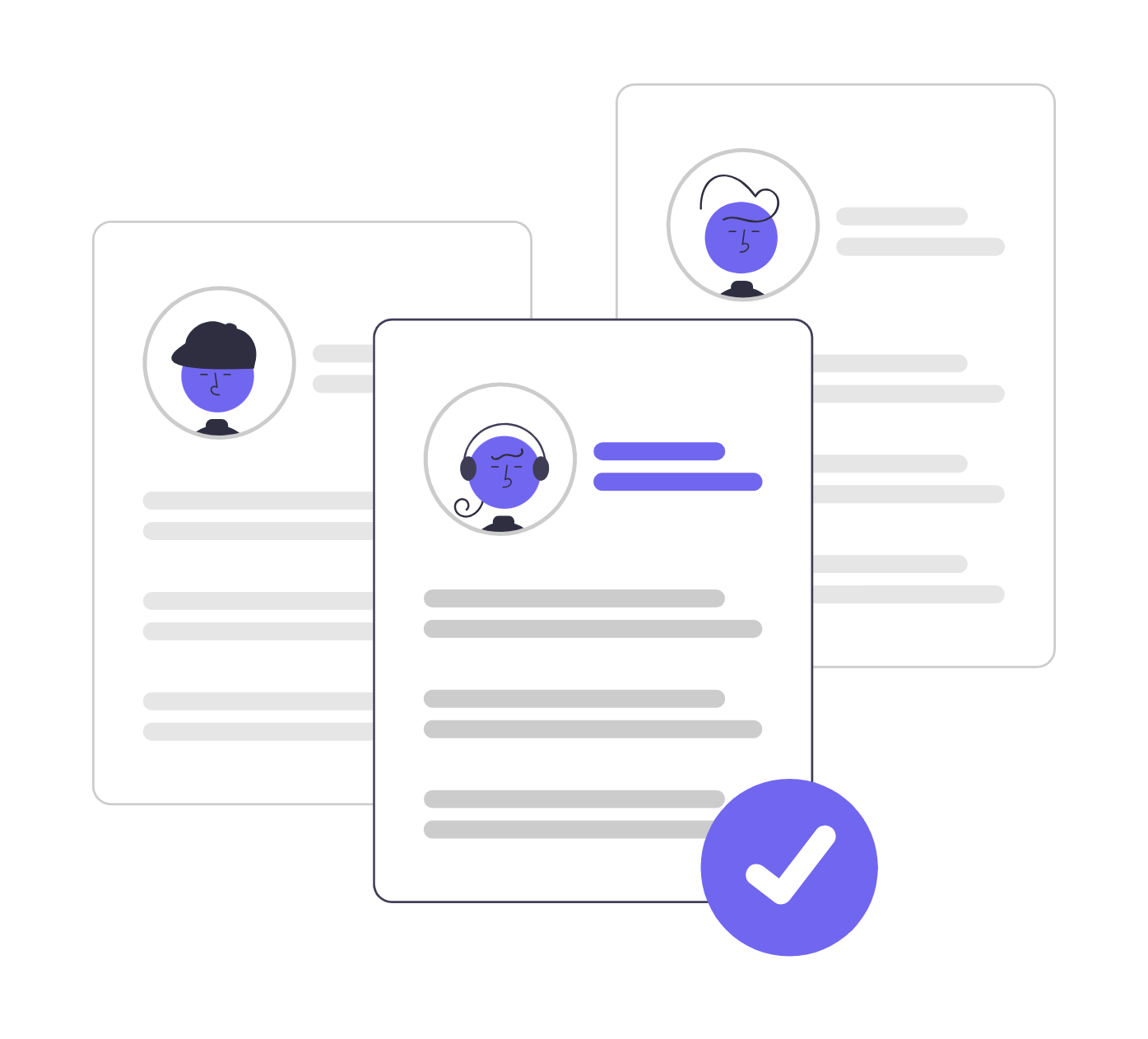Share
In today’s hiring landscape, speed and certainty have become more valuable than ever. With skill shortages increasing globally and the cost of bad hires climbing, companies are increasingly turning inward—filling roles by promoting or transferring existing employees rather than sourcing externally.
But is internal hiring always the smartest move? Or can it sometimes backfire, creating more problems than it solves?
In this post, we’ll unpack the full picture: the strategic advantages, overlooked risks, and how to make internal hiring work—without compromising your team’s long-term success.
1. What Is Internal Hiring—and Why Is It Gaining Traction?
Internal hiring refers to filling open roles using current employees—through promotions, lateral moves, or internal transfers across departments. It’s not just a staffing shortcut. When done right, it’s a deliberate strategy to:
- Strengthen talent pipelines
- Retain top performers
- Reduce time-to-hire
- Preserve company culture
In an era where external recruitment can take months, cost thousands, and still result in mismatches, internal mobility offers an appealing alternative. It lets organizations move quickly, reduce onboarding friction, and reward loyalty.
Quickly identify your most promising candidates. WorkScreen automatically evaluates, scores, and ranks applicants on a performance-based leaderboard—making it easy to spot top talent, save time, and make smarter, data-driven hiring decisions.

2. The Strategic Advantages of Hiring from Within
✅ Speed and Cost Efficiency
Recruiting externally often involves long timelines, job board fees, recruiter commissions, and multiple interviews. Internal candidates cut out much of that. They’re already vetted, already onboarded, and don’t need weeks of ramp-up time.
✅ Cultural Fit and Lower Risk
Internal candidates come with built-in context. They know the systems, values, and personalities that shape your organization. This means fewer surprises and less risk of early turnover—a real concern, given that 30% of new hires leave within 90 days.
✅ Stronger Retention and Motivation
Internal hiring sends a clear message: growth is possible here. That’s powerful. Employees who see upward mobility are more engaged, loyal, and less likely to seek opportunities elsewhere. In many cases, just applying for a new role can be a catalyst for personal development—even if they’re not selected.
✅ Team Integration Without the Friction
New hires from outside the organization can disrupt team dynamics or struggle to find footing. Internal hires typically integrate faster, maintain morale, and are more likely to be accepted by peers—especially in leadership roles.
✅ Unlocks Hidden Potential
Sometimes the best candidate isn’t the most obvious one. Internal applicants may reveal skill sets or aspirations not previously seen in their current role. Without internal hiring opportunities, that potential may remain untapped—or worse, leave for another company that offers growth.
Easily administer one-click skill tests with Workscreen-This way you can assess candidates based on real-world ability—not just credentials like résumés and past experience. This helps you hire more confidently and holistically.

3. The Underrated Downsides of Internal Hiring
Despite the benefits, internal hiring is not without risks—and they’re often overlooked in the rush to fill roles.
❌ Jealousy and Morale Fallout
When internal applicants aren’t chosen, emotions can run high. Disappointment, resentment, or tension between colleagues can follow. Poor communication around these decisions can hurt morale more than simply hiring externally from the start.
❌ Bias and Familiarity Risk
Managers may unconsciously favor “known” employees—even when more qualified options exist externally. This risks entrenching outdated hierarchies, missing fresh talent, and sending the wrong message about fairness.
❌ Skill Gaps and Overextension
Promoting someone internally leaves a gap in their old role. If that role isn’t backfilled or restructured quickly, workloads get uneven and burnout increases—especially in lean teams.
❌ Stagnation and Lack of Innovation
An over-reliance on internal hires can create an echo chamber. Without fresh perspectives, organizations may stick with “what’s always worked,” limiting innovation and adaptation in fast-moving industries.
❌ Limited Talent Pool
Only hiring from within narrows your candidate options. It’s possible to compromise quality just to avoid opening the role externally—and that’s a mistake no high-performing team can afford.
4. What to Do When an Internal Candidate Isn’t Ready
One of the most sensitive challenges in internal hiring is dealing with underqualified applicants.
The worst thing you can do? Ignore them or give them generic rejections. These employees have already demonstrated interest and initiative—and how you handle their ambition matters.
Instead, here’s what the best managers do:
- Offer clear, honest feedback early—don’t leave them hanging.
- Involve their current manager in a follow-up discussion.
- Provide a roadmap: skills to develop, goals to hit, and a timeline.
- Reframe rejection as redirection toward growth, not failure.
Handled well, these conversations become career development moments—not morale killers.
Workscreen Eliminates low-effort applicants—including those who use AI Tools to apply, copy-paste answers, or rely on "one-click apply." This way, you focus only on genuine, committed, and high-quality candidates—helping you avoid costly hiring mistakes.

5. Internal vs External Hiring: How to Choose the Right Path
There’s no universal answer. The best organizations know when to look inward—and when to open the doors.
Choose internal hiring when:
- You need to fill a role fast with minimal ramp-up.
- The role requires deep cultural or process familiarity.
- You have succession planning and employee development in place.
Choose external hiring when:
- The role demands new skills or specialized experience.
- You want to shake up a stagnant team or bring in fresh thinking.
- No internal candidate meets the core requirements.
The most strategic hiring teams use both approaches—based on role type, team maturity, and long-term business needs.
6. How to Make Internal Hiring Actually Work
Internal hiring isn’t a shortcut—it’s a strategic tool. To use it well, companies need to be intentional and structured.
Here’s how:
- Set clear criteria: Don’t assume familiarity equals fit.
- Use structured evaluations: Apply the same rigor you would with external candidates.
- Communicate transparently: Let internal applicants know where they stand—and why.
- Invest in development: Build pipelines of internal talent ready to step up.
- Backfill promptly: Prevent burnout by covering the role left behind.
Done right, internal hiring strengthens your culture, motivates your team, and saves time. Done poorly, it erodes trust, fuels resentment, and leads to costly missteps.
Conclusion: Internal Hiring Is Powerful—But Not Always the Right Move
Hiring from within can be a win-win. It’s faster, cheaper, and better for morale—when used wisely. But it’s not a guaranteed fit for every role, every time.
To get it right, companies must resist the pull of convenience and instead build a process rooted in transparency, strategy, and fairness.
Because whether you hire internally or externally, the goal remains the same: finding the right person, for the right role, at the right time.
FAQ
Internal hiring is often more effective when speed, cost-efficiency, and cultural continuity are priorities. It works best when you have a strong internal talent pipeline, the role requires deep knowledge of company processes, or there’s an urgent need to fill the position without disrupting momentum.
The biggest risks include internal bias, limited diversity, skill mismatches, and potential resentment from employees who are overlooked. Additionally, promoting someone internally creates a vacancy in their previous role, which can lead to workload strain if not backfilled quickly.
Communicate early and transparently. Offer clear feedback, outline a development path, and involve their current manager in the conversation. This turns rejection into a growth opportunity and helps maintain engagement and morale.
Yes—especially for fairness and legal reasons. Internal candidates should be evaluated using the same criteria and assessments to ensure unbiased decisions and maintain trust in the hiring process.
Yes. While internal hiring supports continuity, it can also limit the influx of fresh ideas. Without regular input from external candidates, companies may stagnate or reinforce outdated practices. Balancing both internal and external hiring is key to staying adaptable.
Invest in continuous learning, offer stretch assignments, and conduct regular skills assessments. Succession planning, career development frameworks, and mentorship programs can help prepare employees for promotion before roles even open up.

